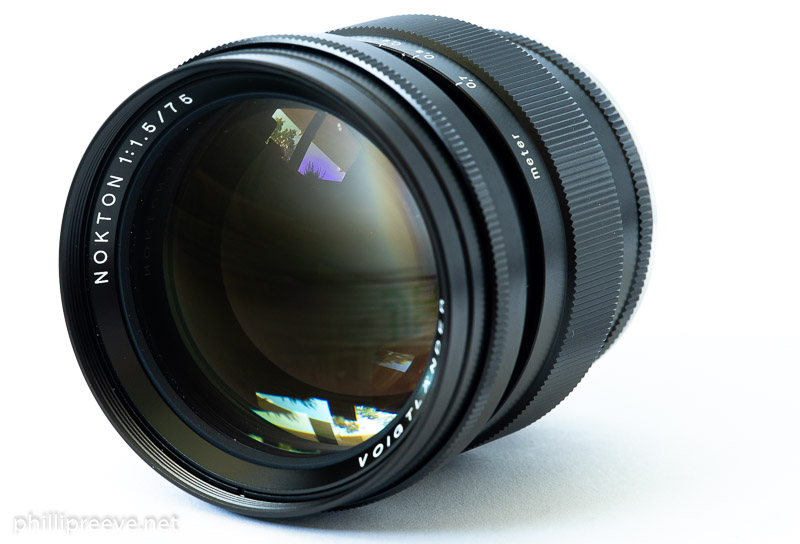 The Voigtlander VM 75mm f/1.5 Nokton is a very compact yet fast medium tele lens. In this review we have a look how it performs on the Sonya7 series as well as the Leica M10.
The Voigtlander VM 75mm f/1.5 Nokton is a very compact yet fast medium tele lens. In this review we have a look how it performs on the Sonya7 series as well as the Leica M10.
Image Samples

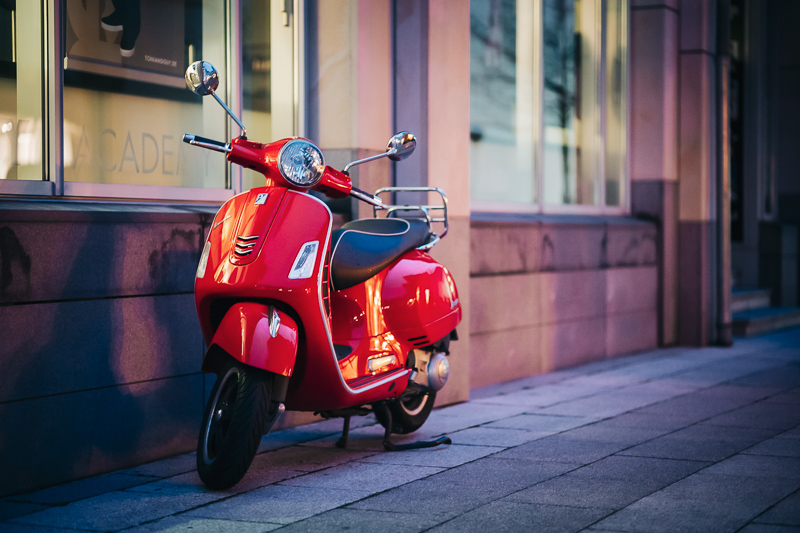
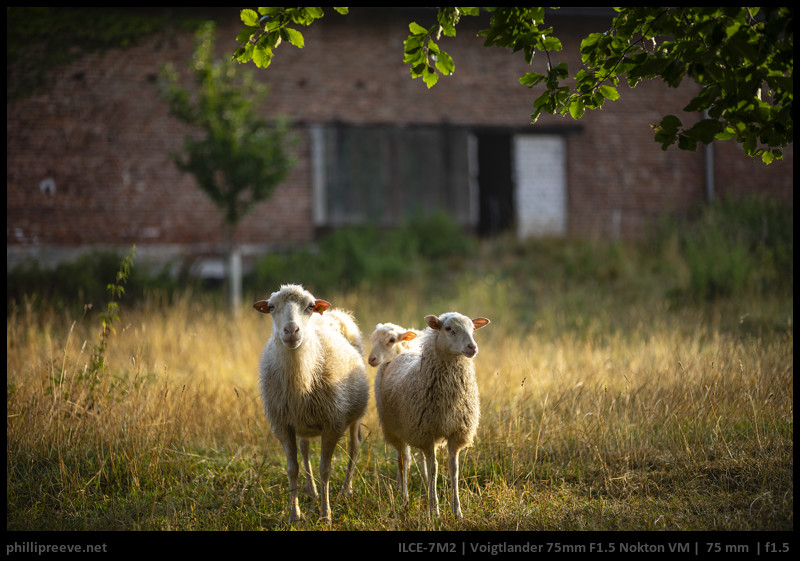
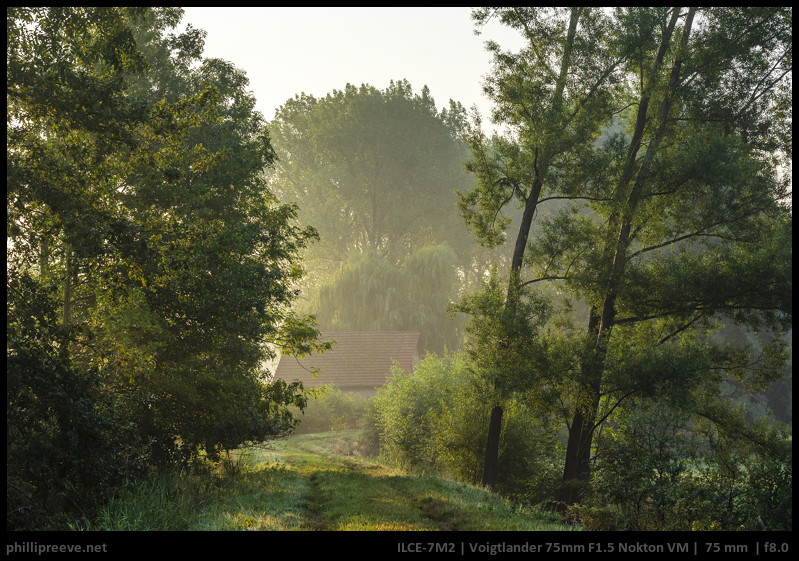
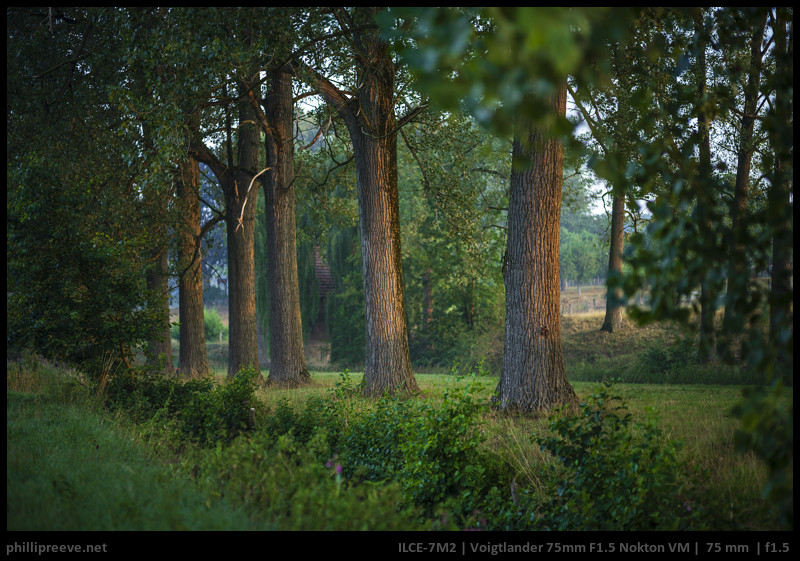
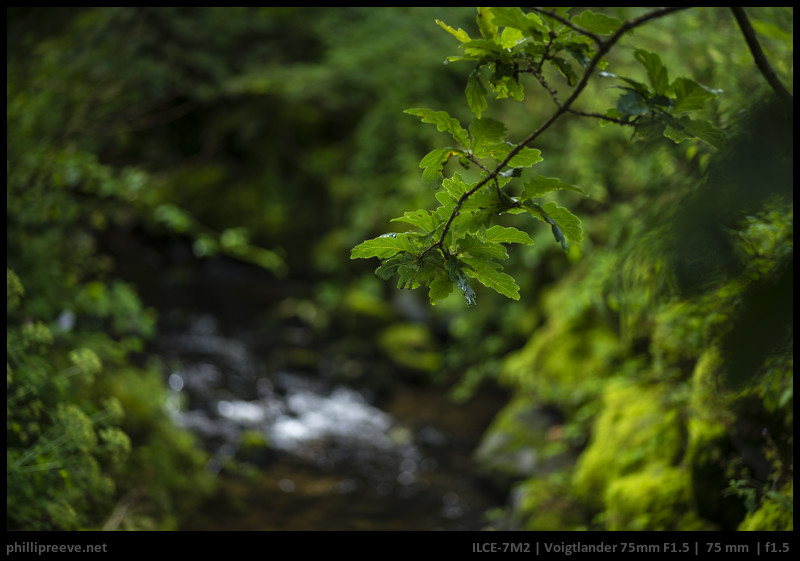
Most images in this review can be found in full resolution in my Voigtlander 1.5/75 flickr set.
Specifications
| Diameter | 62.8 mm |
| Length | 63.3 mm |
| Filter Thread | 58 mm |
| Weight (no hood, no caps) | 350 g |
| Max. Magnification | 0.13 |
| Close Focusing Distance from the sensor | 0.7 m |
| Number of aperture blades | 12 |
| Elements/ Groups | 7/6 |
| Mount | M-mount, tested with adapter |
The Voigtlander 75mm F1.5 Nokton sells for $999 at Cameraquest, amazon.com or B&H (affiliate links). If you purchase the lens through these links I get a small compensation with no additional cost to you.
Changelog
- 7.8.2019 – Start of review
- 14.8.2019 – more samples, pros and cons, sharpness section
- 25.8.2019 – review finalized
- 15.4.2020 – major update with Bastian’s experience on the M10
Contents
Disclosure
A copy was loaned to Phillip free of charge from RobertWhite.co.uk for about three weeks. Since then Bastian has bought his own copy and used it for several months.
Versions
The Voigtlander 75mm F1.5 Nokton is an M-mount lens and comes in silver and black.
An E-mount version hasn’t been announced yet and I am not sure if it will be announced since the manufacturer Cosina has only released some of their M-mount lenses in E-mount as well.
Before there were two other 75mm lenses released under the Voigtlander brand.
The Voigtlander 75mm F1.8 could be seen as the predecessor of the 75mm F1.8. It is actually about 75g heavier than the faster F1.5 and my impression of it wasn’t that positive.
The Voigtlander 75mm F2.5 is even smaller and lighter than the 1.5/75 and has a good reputation. It uses the M39 screw mount.
Build quality
The Voigtlander 75mm F1.5 feels really solid. The lens hull is made from nothing but metal and tolerances are very low. All markings are engraved and filled with paint.
There is no gasket around the mount and Voigtlander does not claim any weather resistance.
Of course I can’t tell you how durable the lens will be in the long term. All I can do is give you my superficial impression which is very positive in this case.
Bastian once had to get his Voigtlander 1.7/35 repaired which had to be done in Japan and he had to wait many weeks for the repair while repairs from other manufacturers are usually much faster. Stephen from CameraQuest in the US told me that they do most repairs in house and that few lenses have to go to Japan.
Handling
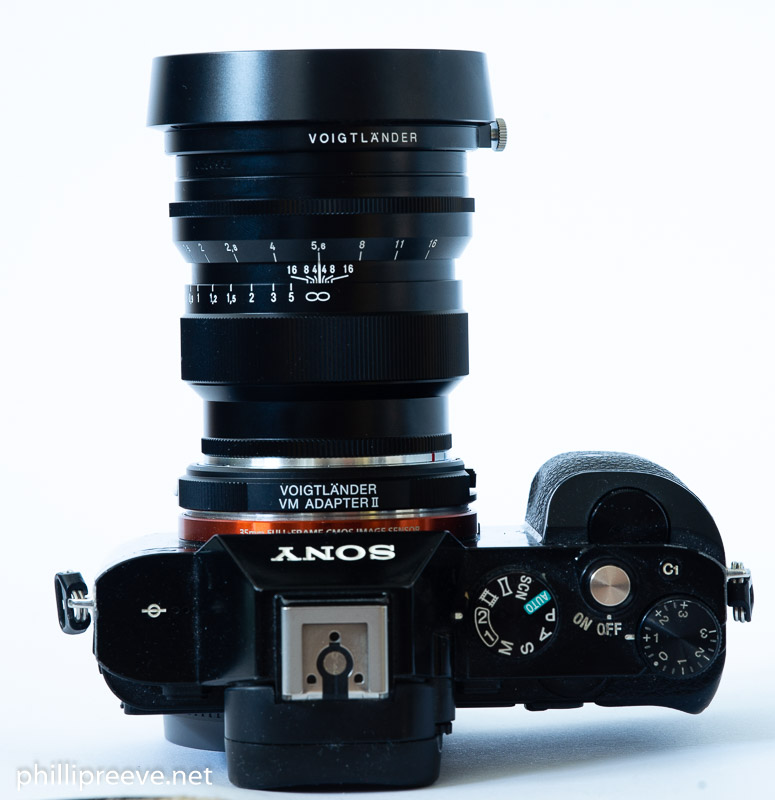
Cosina, the manufacturer of the Voigtlander 1.5/75 VM really knows how to design manual focus lenses and the 1.5/75 is no exception. Handling is excellent.
Focus Ring
The focus ring travels around 100 degrees from 70 cm to infinity. I think that is a very reasonable transmission and I had no issues to focus precisely at longer distances but it was also easy to track a moving child. The ring itself is well textured and the resistance is about perfect. As you focus closer the front of the lens after the focus ring extends by about 1 cm.
Aperture ring
The aperture ring situated at the front is a joy to use. It is easy to distinguish from the focus ring because it is elevated and has distinctive, easy to track stops. The aperture ring stops down in half stops to a maximum of f/16.
Hood
The Voigtlander 1.5/75 has a small to medium sized, very light hood which attaches to a separate screw in ring. I like it because it doesn’t make the lens much bigger but protects the front well enough that I can put it into my camera bag without a front cap.
The hood is made from metal and I would wish that Voigtlander had rubberized the front because as it is I wouldn’t store camera and lens on it like I would with a more solid feeling and rubberized lens hood as found on Sony GM lenses for example.
Size and Weight
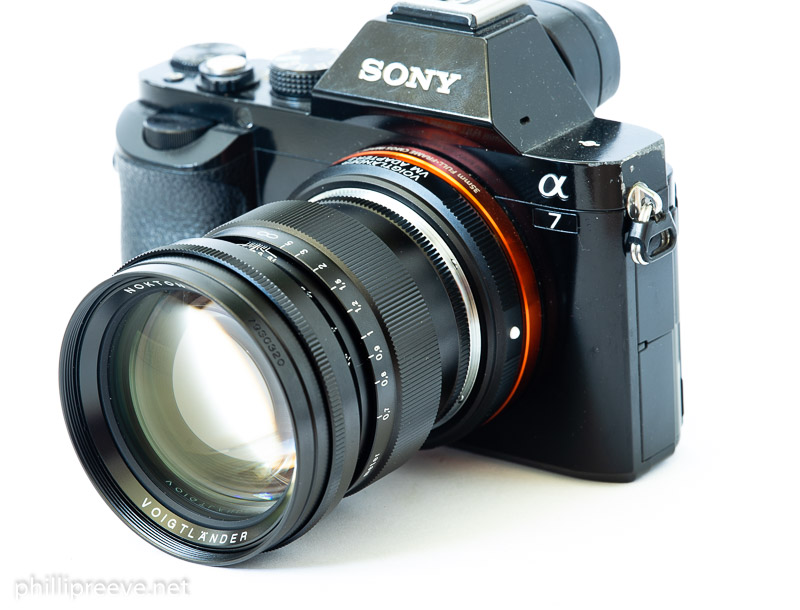
At 350g and with a length of just 63mm + adapter the Voigtlander 75mm F1.5 Nokton is small and light weight for it’s speed. With adapter it balances really well on my Sony a7II.
Optical performance
Flare Resistance
As always evaluating flare is a complex matter since you can get any lens to look bad if you push it hard enough and a slight change of scenario will affect results a lot.
I think the Voigtlander compares very well to other lenses, with little very well controlled veiling flare and little ghosting.
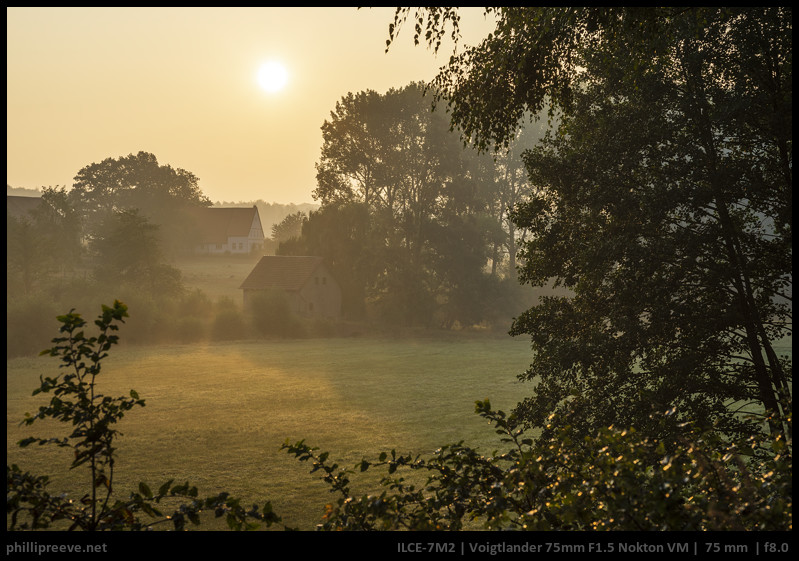

One issue I ran into several times though is some kind of internal reflection:
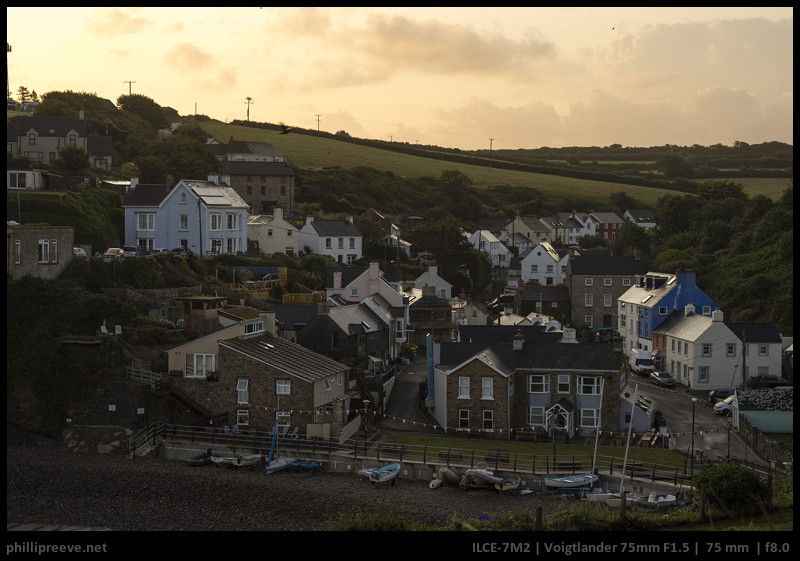
Sunstars
Voigtlander lenses are known for their very defined sunstars. Personally I like this effect a lot, other people don’t. You just need to stop down to f/2 until you get very well defined 12-pointed sunstars.
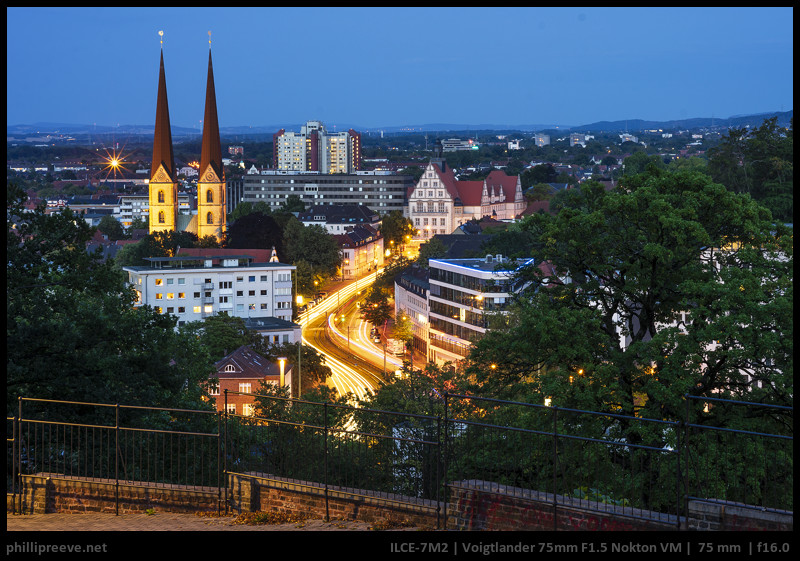
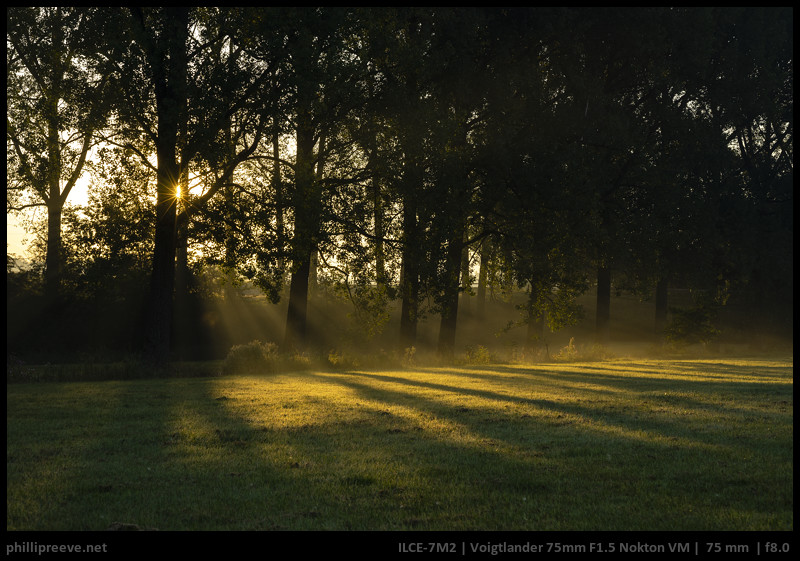
Bokeh
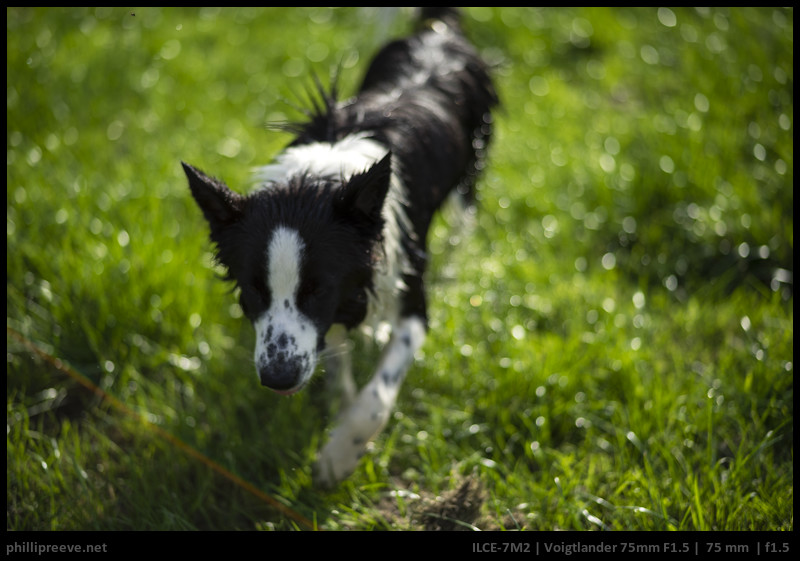
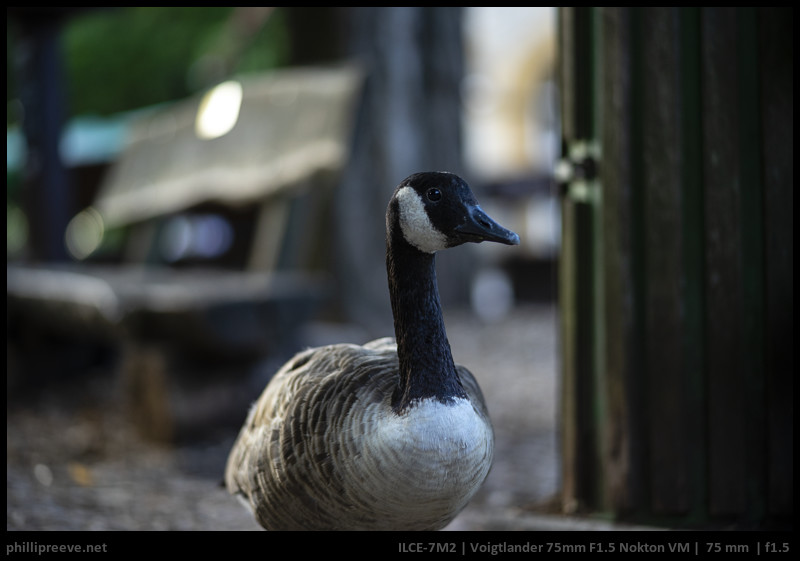
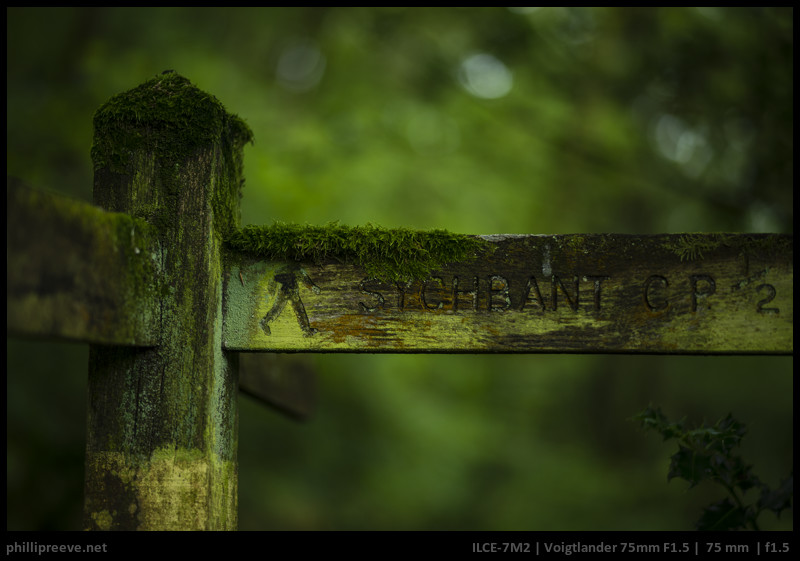
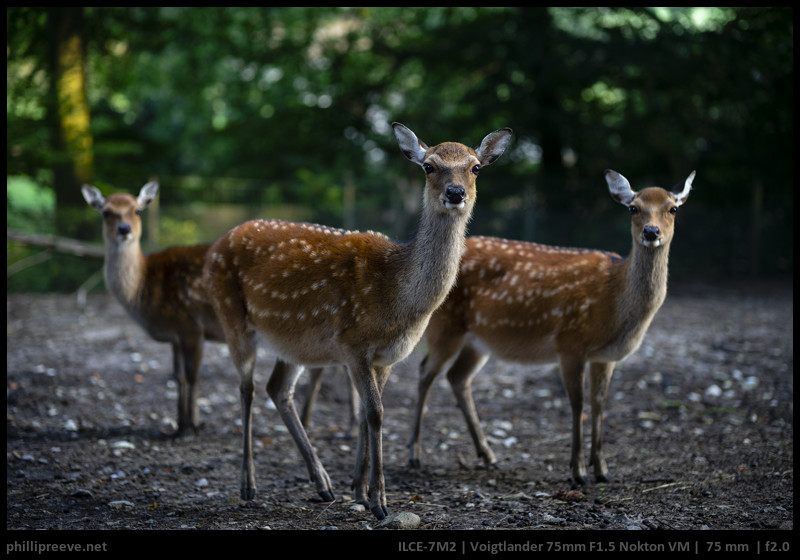
At portrait distances there is a lot of blur and bokeh pretty smooth. Voigtlander uses the new, 12 bladed aperture for the 1.5/75 which keeps oof light rounder than the older 10 bladed one so there is less of a tradeoff for the straight aperture blades.

At longer distances bokeh is less smooth and the rather strong cat’s eyes can be a bit distracting. Some of the bigger 85mm lenses will perform better here, as you can see in this comparison with the Sony FE 85mm 1.4 GM (both focused at 5.0 m):
Chromatic Aberrations
Axial CA correction I would call a little above average. By f/2 they are reduced a bit and by f/2.8 they are reduced to low levels. by f/4 only traces remain.
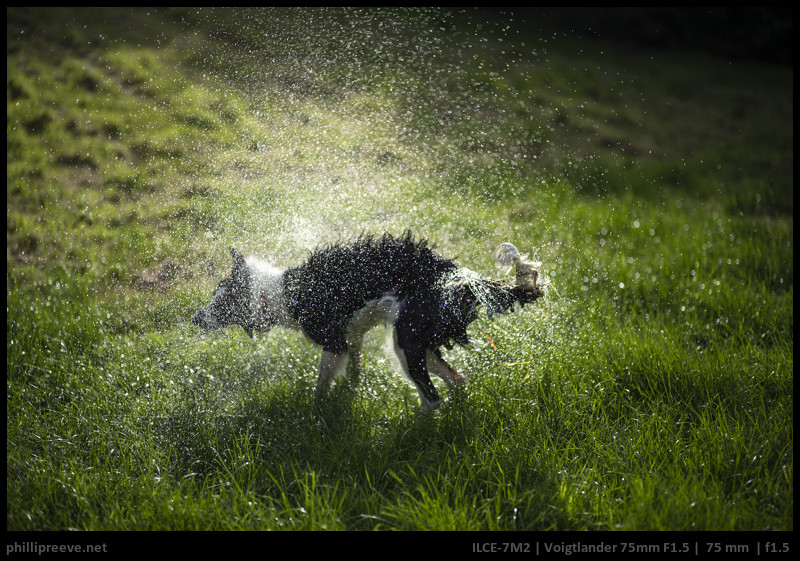
Vignetting
Vignetting is moderate at 2.1 stops wide open which is reduced to 1.4 stops at f/2 and hardly noticeable 0.6 stops at f/2.8. From f/4 it is below 0.4 stops. This is less vignetting than I would have expected given the compact size of the Voigtlander 75mm F1.5.
| Aperture | Vignetting |
| f/1.5 | 2.1 EV |
| f/2 | 1.4 EV |
| f/2.8 | 0.6 EV |
| f/4 | <0.4 EV |
| f/5.6 | <0.4 EV |
Distortion
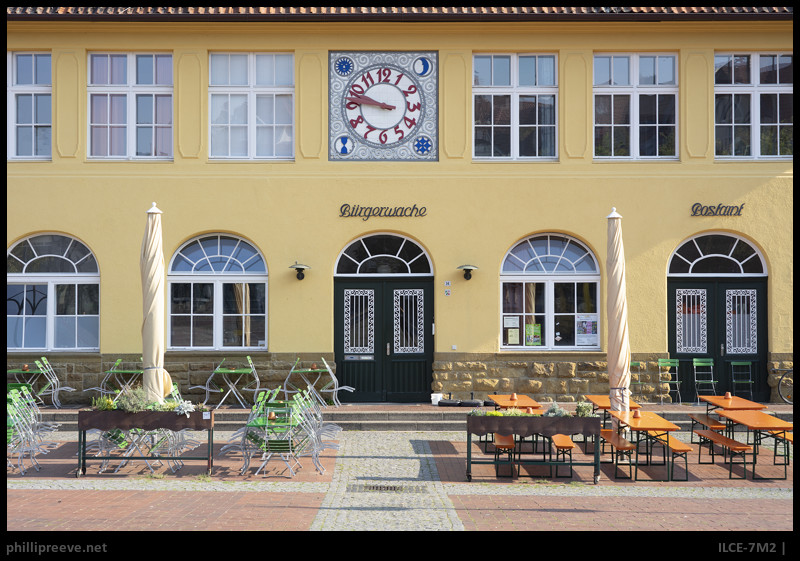
My test subject wasn’t ideal but I don’t see any.
Sharpness
0.7m distance (24mp Sony A7II)
At the close focusing distance of 0.7m the Voigtlander 1.5/75 is significantly softer than at longer distances. Here I compared it to the Sony FE 1.8/85 which is not a block focus design like the Voigtlander. In the focus shift section you can also see that at 0.7 m focusing distance the plane with maximum sharpness is not the plane with maximum contrast and vice versa.
1.0m distance (24mp Sony A7III vs 24mp Leica M10)
For portraiture it isn’t so important how flat the field is, it is more interesting to see what the sharpness is like when focused at different parts of the frame to take field curvature out of the equation.
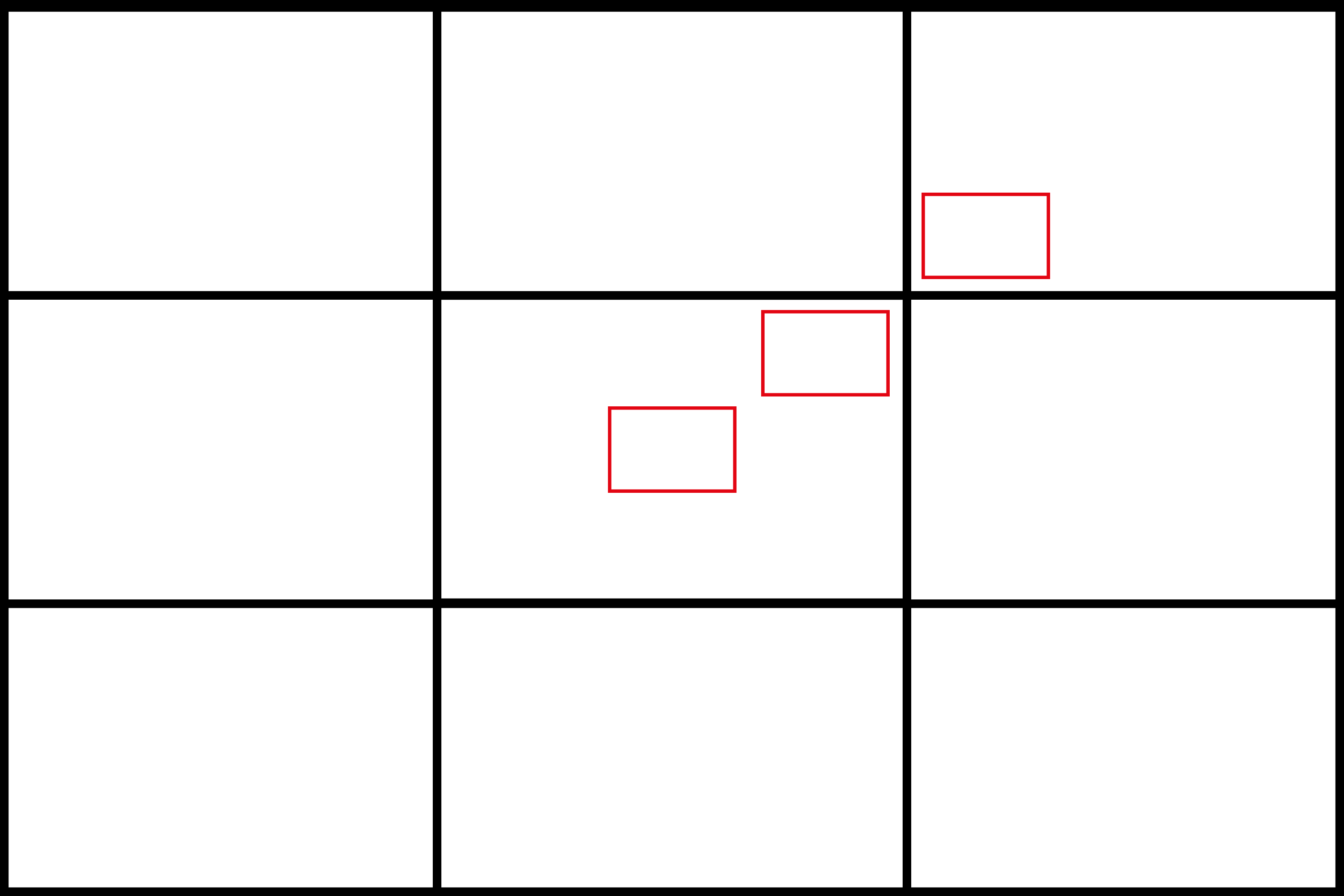
We will be looking at 100% crops from the 24mp Sony A7III and the Leica M10. Both lenses do not have an anti aliasing filter in front of the sensor.
center
Sony A7III <—> Leica M10
inner midframe
Sony A7III <—> Leica M10
outer midframe
Sony A7III <—> Leica M10
Observations
The Voigtlander VM 75mm 1.5 Nokton has not been optimized for shooting at the minimum focus distance and 1.0 m is not that far away from 0.7 m.
At maximum aperture the lens is a bit soft, the more the further you are away from the center of the frame.
Stopping down to f/2.0 and f/2.8 improves the performance noticeably.
2.0m distance (24mp Sony A7III vs 24mp Leica M10)
For portraiture it isn’t so important how flat the field is, it is more interesting to see what the sharpness is like when focused at different parts of the frame to take field curvature out of the equation.

We will be looking at 100% crops from the 24mp Sony A7III and the Leica M10. Both lenses do not have an anti aliasing filter in front of the sensor.
center
Sony A7III <—> Leica M10
inner midframe
Sony A7III <—> Leica M10
outer midframe
Sony A7III <—> Leica M10
observations
A focus distance of 2.0 m seems to be close to what the Voigtlander VM 75mm 1.5 Nokton has been optimized for.
Differences between f/1.5, f/2.0 and f/2.8 are minimal and the falloff is also reduced with the inner midframe showing a performance similar to the center.
infinity (24mp Sony A7II)

Sharpness is very good in the center from wide open but the midframe area is significantly softer. This is in part caused by field curvature. If I focus on the midframe area it improves at the cost of center and corners but for very good levels I need to stop down to f/2.8. By f/5.6 I get very good across the frame sharpness.
infinity (24mp Leica M10)

When used on the Leica M10 with a thinner filter stack the performance is noticeably better.
The midzone dip is not as pronounced here, the midframe and corners show a similar performance at f/1.5 and f/2.0 with a little less contrast and resolution compared to the center.
By f/2.8 the midframe gets a noticeable boost in contrast and the corners in resolution.
While the corners are never as contrasty as the center performance is very even at f/5.6 to f/8.0.
Focus shift
50% crops, A7rII
We are dealing with one of those lenses here, where the plane with maximum contrast is not the plane with maximum resolution close to the minimum focus distance. The Canon EF 85mm 1.2 L II is another example for this behaviour.
This makes focusing a bit harder, as you have to decide whether you prefer a softer image with more details or a higher contrast one with less details.
It also makes evaluating focus shift harder: if you focus at f/1.5 for maximum resolution and then stop down all is fine, if you go for maximum contrast and then stop down the lens is exhibiting focus shift.
At longer focus distances this is luckily less of an issue, just keep in mind this is not a macro lens and not optimized for shooting at or near the minimum focus distance.
Alternatives
Sony FE 1.8/85: Both lenses while close in spec follow different design approaches. If you need a very practical lens you will probably be well served by the Sony which offers an excellent balance of lowish price, fast AF and optical performance. I don’t think the unexciting build quality or below average flare resistance will be an issue for many. If you are less price sensitive and put more emphasis on handling, manual focus and smaller details like sunstars and flare resistance the Voigtlander will be much more enjoyable but you will have to live with some softness up close. Bokeh is actually very comparable.
7Artisans 1.25/75: We had planned to shoot a comparison with it but due to the 7Artisans’s late arrival we couldn’t. The 7Artisans is not as sharp and well corrected for optical aberrations and also heavier and bigger, but the bokeh can be very nice so if this is your main concern it may still be worth a look.
Voigtlander 1.8/75: Cosina has managed to increase speed a bit and increase performance a lot while decreasing the weight and length over the 1.5/75’s predecessor. I think that really speaks to the expertise Cosina holds today at creating small, high performance lenses. Price is the only argument I could find for the f/1.8.
Voigtlander 2/65 APO Macro: Currently you can’t come much closer to optical perfection than with the 2/65 APO while with the 1.5/75 there are some compromises. What you trade for that performance over the 1.5/75 is speed and handling since it is about 200g heavier. I think the 1.5/75 is a better choice if your focus is more on portraits and light hiking while the 2/65 is for those capturing smaller details and appreciating performance.
Zeiss Loxia 2.4/85: The Zeiss shows excellent sharpness in about any setting so unlike with the Voigtlander you don’t need to consider if the lens will be sharp enough at the distance and aperture you are using. The Loxia is a native E-mount lens which makes handling more pleasant, but otherwise the Voigtlander’s handling is superior and it is 2 cm shorter and 180g (adapter included) lighter. Because it is about 1 stop faster the Voigtlander is more versatile which would be a big argument for me personally. How well you can integrate a 85mm vs a 75mm lens into your kit is another important consideration.
Leica Summilux-M 1.4/75: I have never shot the Leica so I won’t go into any details but I can mention that it is 200g heavier and about 16mm longer. The MTF for the Leica as well as the few sample images I have seen from it show me that the Voigtlander’s rendering is more “modern” with fewer aberrations, higher sharpness and contrast than the Leica’s rather “classic” rendering. As usual the Leica is also bloody expensive at about $3500 used.
Leica 1.25/75: 3 times the weight, half a stop faster, $12,795.00. Brings your photography to the next level. Or so Leica claims. If you want to buy one please use my affiliate link. thanks.
Conclusion
pros
|
average
|
cons
|
Phillip’s Conclusion for use on E-mount:
The Voigtlander 75mm F1.5 Nokton has been a very enjoyable lens to me because it has the usual qualities I like so much about most modern Voigtlander lenses: Handling is as good as it gets, it is small, draws very defined sunstars and it handles backlight very well.
Sharpness is a bit of a mixed bag on a Sony though: For very good across the frame sharpness you want to stop down to f/5.6 or even f/8 where you get very good to excellent results. That’s hardly a limitation for landscape photography but for some applications it can be a bit limiting. For portraits performance depends a lot on the focusing distance. For tight portraits with a reproduction ratio greater than 1:10 the Voigtlander ist rather soft wide open so you either need to embrace that softer look or stop down to f/2 or f/2.8 depending on the placement of your subject. For longer distance portraits with a reproduction ratio of about 1:25 performance is much better and you can use f/1.5 with little hesitation.
Bokeh is characterized by mostly smooth rendering of out of focus highlights but also a little nervous transition zone and stronger cat’s eyes. For close to medium distance portraits you won’t find any fault with the bokeh but at longer distances bokeh can become somewhat of a distraction and a lens like the Sony FE 85mm 1.4 GM would outperform it here.
Other aberrations are hardly noteworthy: Distortion is very well corrected, vignetting is average and CA is corrected slightly above average.
All in all the Voigtlander 75mm F1.5 Nokton manages a rare balance of excellent handling, small size, speed and generally very good optical performance. Especially on E-mount you need to accept a few compromises in the last category to realize the other qualities though. We still hope that a modified version will be announced for E-mount but, that hope is dwindling since it has been close to a year since the announcement of the M-mount version. Despite the sensor stack induced field curvature the Voigtlander 1.5/75 VM could still be an attractive lens for E-mount users who value small size, speed and manual focus.
Bastian’s Conclusion for use on M-mount:

I have mainly used the lens on the Leica M10, where it is an amazing fit in terms of size and weight. It is even a slightly better performer here compared to the Sony cameras as it can also be used at wider apertures for infinity shooting with only very little drawbacks.
With a 75mm lens with a maximum aperture of f/1.5 you are working at the limit of the accuracy of the rangefinder mechanism though and you will get more consistent results with an electronic viewfinder or using live view.
In my opinion this is the best balanced fast portrait lens you can get for your Leica M camera.
The Voigtlander 75mm F1.5 Nokton sells for $999 at Cameraquest, amazon.com or B&H (affiliate links). If you purchase the lens through these links I get a small compensation with no additional cost to you.
More Image Samples
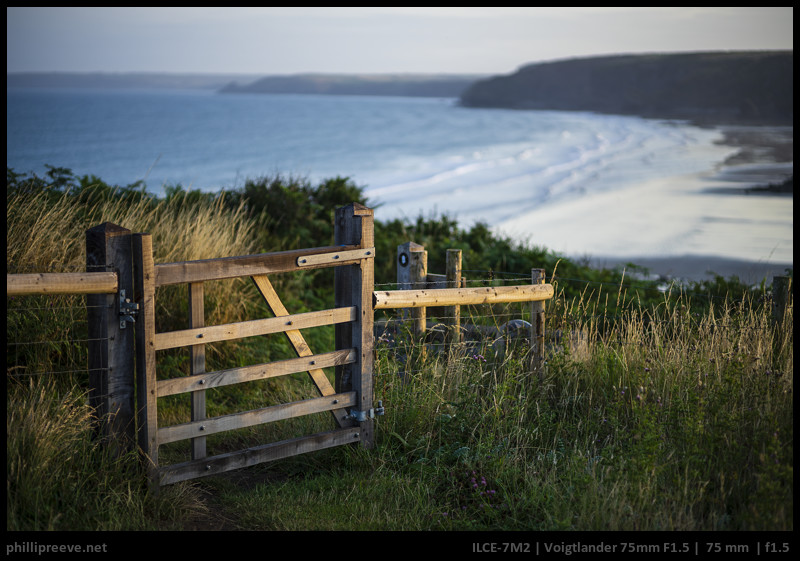
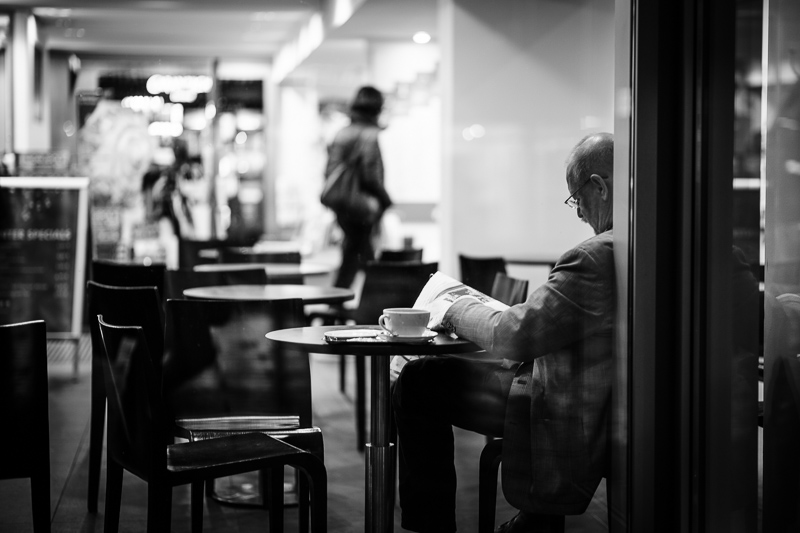
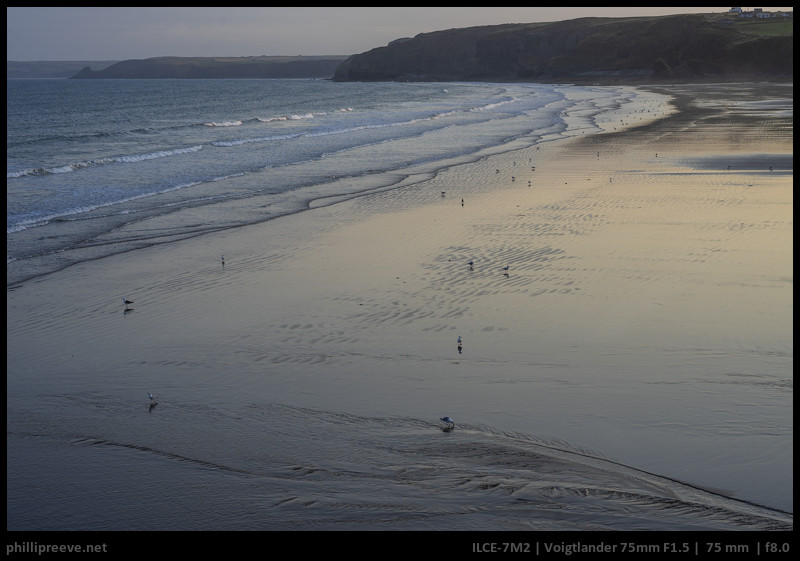
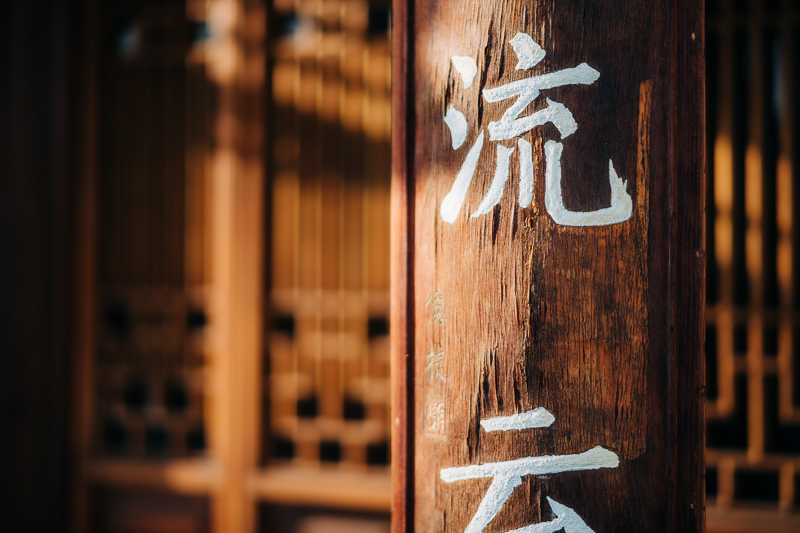

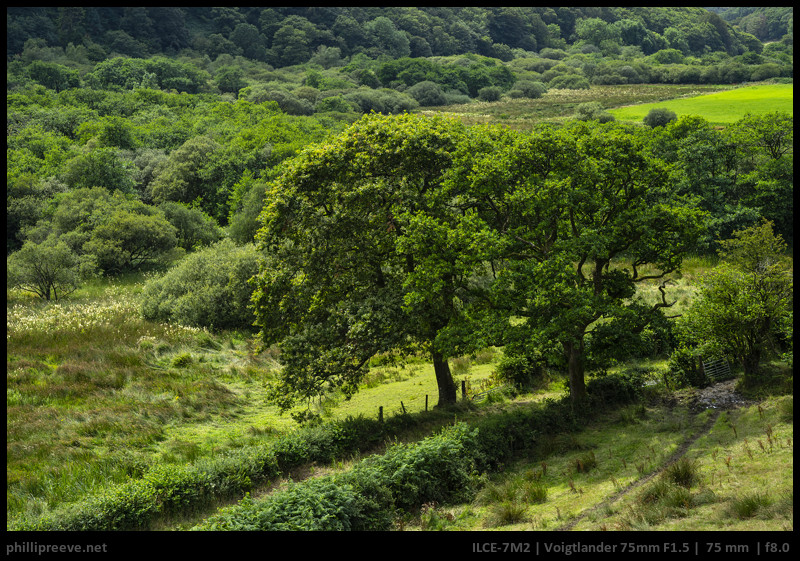
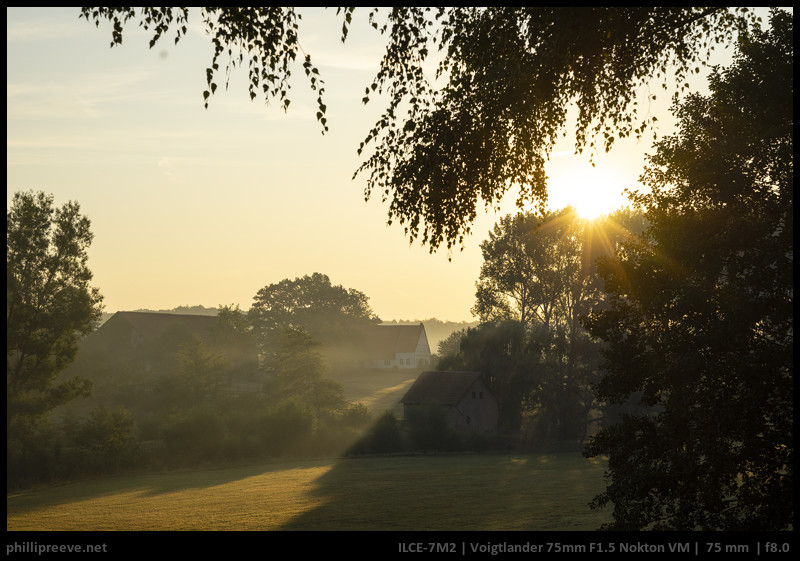

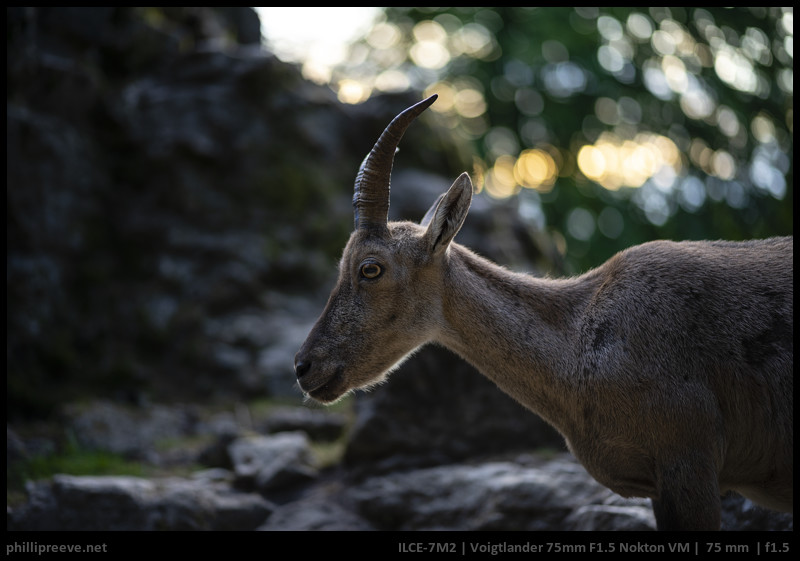
Most images in this review can be found in full resolution in my Voigtlander 1.5/75 flickr set.
Other articles
Latest posts by Phillip Reeve (see all)
- Review: Samyang AF 75/1.8 FE - April 12, 2021
- The FE-List now has 113 lenses on it - March 25, 2021
- Announced: Voigtlander 35mm F2 Apo-Lanthar - February 15, 2021




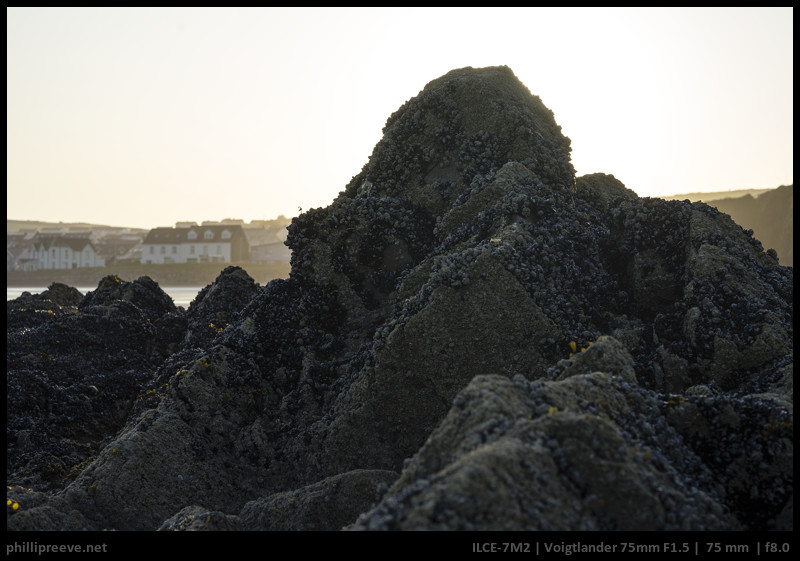


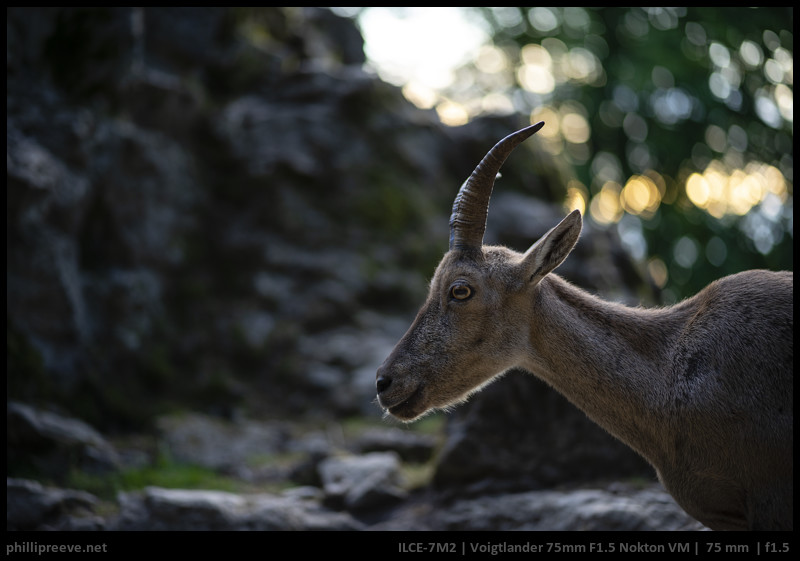




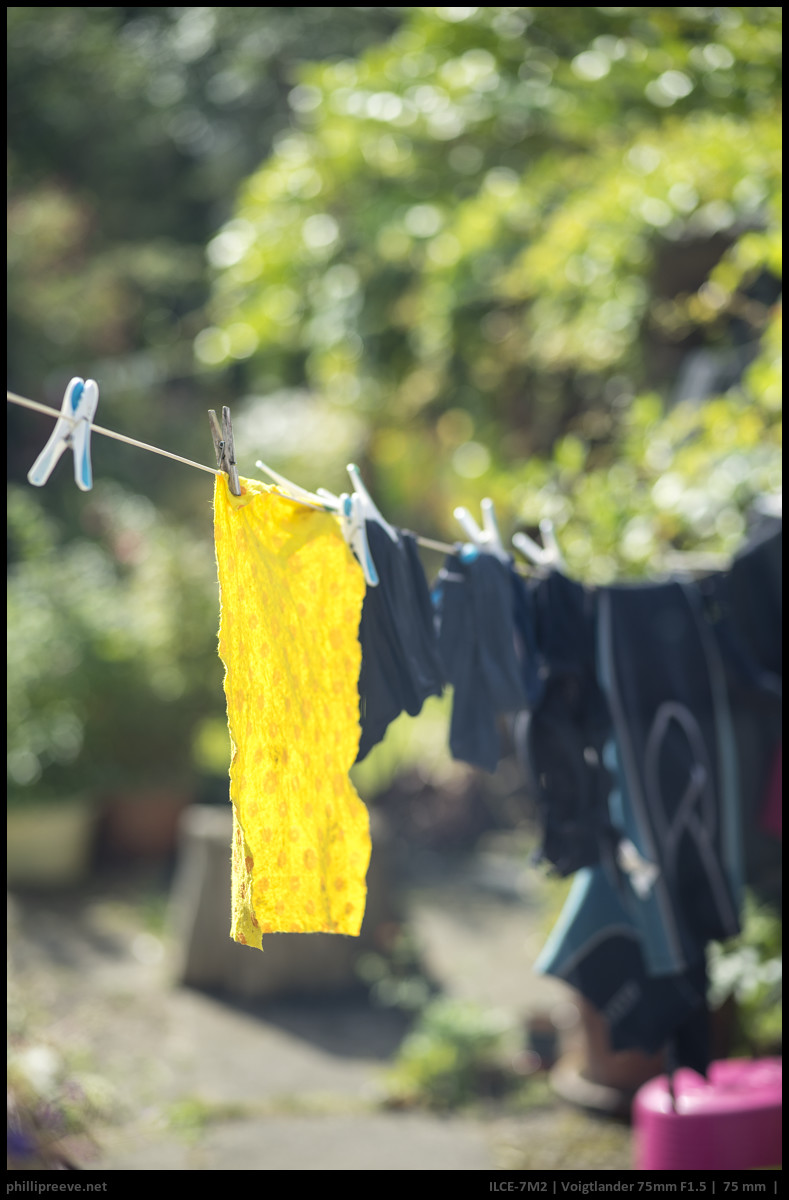










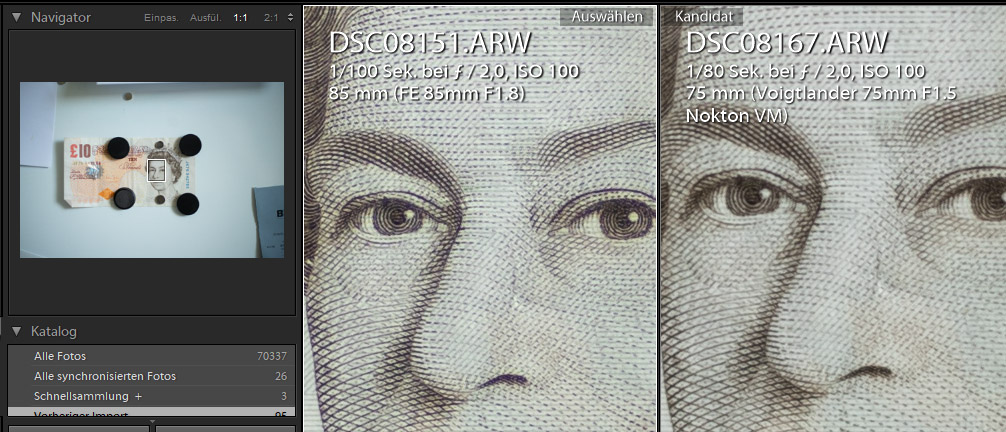















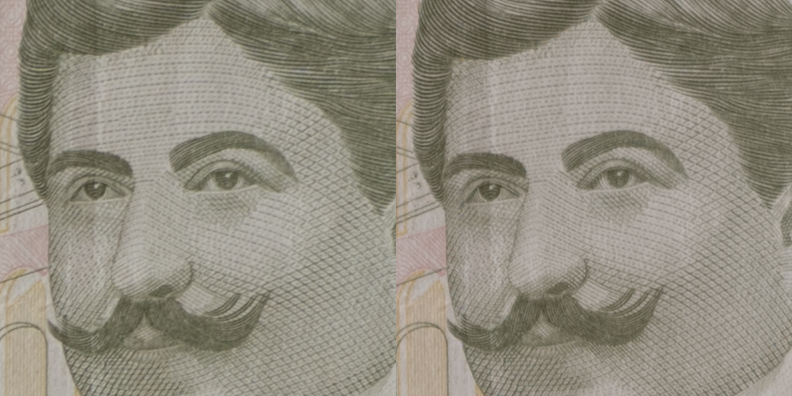









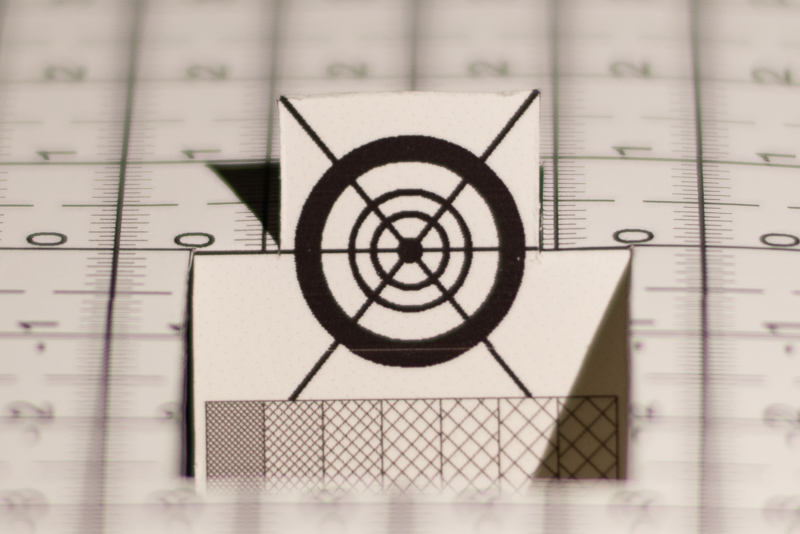
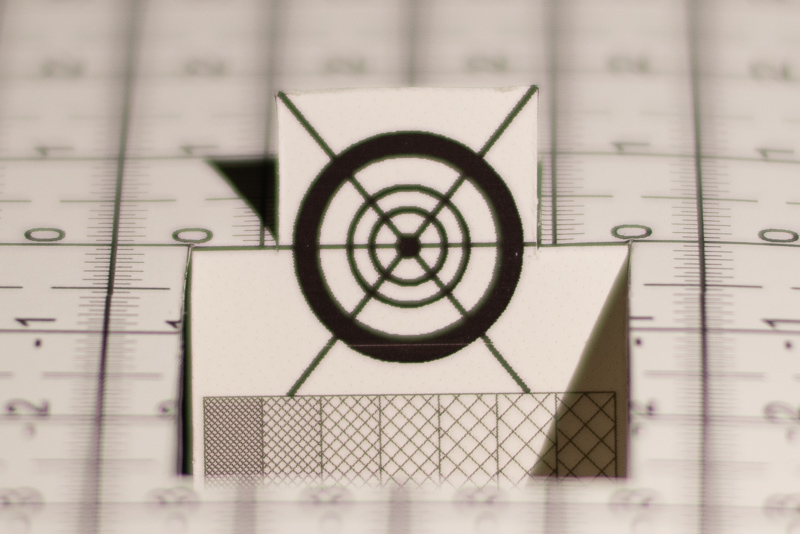
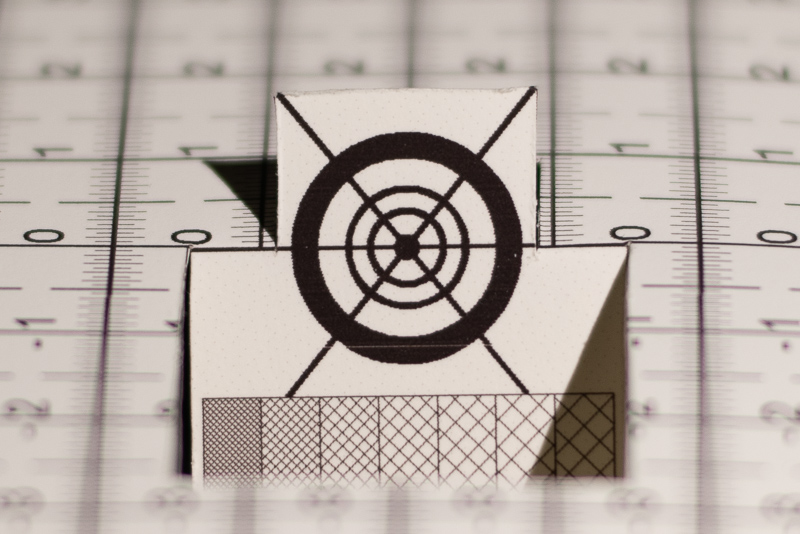

It seems this lens gives good micro contrast.
Please define microcontrast.
If you don’t know it’s easy to find out . Many people who ask this question do so as a jist . It’s done to “say” microcontrast is not a real thing.
Micro Contrast is the inner tonal detail of an image taken with a lens. Or observed through an optical device.
It is all the shades of color or grays within a photograph or film/video.
To ignore this detail is to ignore depth of detail and roundness of shape created by light and dark . Objects have shape . Perception of depth of these actual shapes are perceived through graduations of light falloff . So shading fades either with soft gradients of hard lines and everything in between. If a lens is incapable of of rendering these shades it has no micro contrast, inner tonal details , depth of shading , ect ect . However you’d like it worded. Some lens designs lend to great capture of this detail in a scene others don’t .
you got some typo`s in the text – versions and build quality…
nice sample images… good thing it doesn`t come in e-mount, could be tempting… 🙂
Cheers, A.
it seems to me the native CV 65mm f2 Macro is a much more versatile lens at only 100g more.
Unless you shoot M-Mount too…
Somehow I still had the specs from the CV 1.4/21. Actually it is 350 which is very light.
i was already wondering… considering the size difference.
It is much more than just 100g more, if I do remember correctly the 65mm f2 macro is 635g – so almost double the weight!?
My initial specs said 540g because I used the cv21 review as a template and it didn‘t save my update.
Pembrokeshire (the landscape)?
exactly.
I was wondering about the weight!
Also, I imagine that the focus ring rotation is 100° and not 10° as published.
fixed, thanks. Still traveling so I was a bit too quick to hit the publish button.
Phillip:
For the test shots, -how much post processing is there? Are you shooting RAW and converting to jpeg in LR. I notice huge vignetting in your doggy shots. Is the point to show images that are as close to SOOC as possible?
Sharpness tests are default settings, the rest processed to taste. Vignetting is al little of 2 stops wide open which isn’t little but not excessive either. In the dog shots the background makes it appear much stronger than it is but that is just shadows.
Phillip, where are you? looks very beautifull!
Many thanks for this review; I have been waiting to hear about this new and very tempting lens from CV.
I hope you can test it with more recent a7R cameras, and perhaps compare results with the a7II camera, in order to get an impression of the difference in sharpness.
Thanks again,
C. Rodriguez
Results will be the same since filter stack thickness does not vary and I just have the a7II anyway.
Sean Reid claims the a7r line has better sharpness with M lenses as the lack of an AA filter on the a7r line aids the resolving ability of M lenses. The AA filter also increases the thickness of the filter stack.
Does he support that with any tests?
Yes quite a few actually. He tests the 28 Skopar and 28/2.8 across the a7r line, a7s line, SL and M line.
Are you familiar with his work? You may enjoy reading his essays. He’s not only been a lens tester for major manufacturers, but also an accomplished photographer in his own right. Thus his real work examples and method of optical evaluation expands on the typical testing of CA, bokeh, build quality, luminance vignetting, and sharpness.
All these articles are behind the paywall I guess so you can’t link to them? I am asking because it goes against any evidence I have seen so far. He covers systems I am not really interested in so I don’t see myself paying for it.
Sean Reid is quite right. It is not surprising that files from a 36MP camera with no AA filter look sharper than those from a 24MP camera with AA filter, with good enough lenses of course.
nice little lens. Comparing to the Loxia 85 weight I can think of changing. Love Loxia for landscape and macro photography with extension tubes. Would Voigländer match my requirements? Use my photo gadgets in humid environments, with different experiences what “leaky lenses” can handle. Larger glass surfaces cause greater problems in temperature.
At typical landscape settings results should be close to the Loxia with a little nicer sunstar and a little weaker corners.
For closeup photography I would expect better results from the Loxia but I haven’t tested the CV there yet.
I would expect better sealing from the Loxia but I am not really sure what you mean by leaky lenses.
Ha, Interesting! If we get an E-mount version it could be a very attractive replacement for the 2.4/85 Loxia. Especially for Landscape, which is what I’d use the Loxia for anyway – fingers crossed!
i agree: It is significantly smaller, close enough in landscape performance and more versatile as a portrait lens but of course a little short for many kits.
Interesting how close the optical formula of this lens is to the CV 50/1.5 – one more element and everything elses is practically identical. No wonder it seems to behave is rather similar fashion (on Sony with the 2mm+ optical stack).
Thanks for the review. Curious as to why the lens was not tested on a digital M camera such as the M10 or M240. These are the cameras the lens was designed to be used on, not a thick filter stack Sony A7.
Because I don‘t own one and hoped that there were no issues with it on a Sony.
Philip: regarding Sean Reids site, he does have some free essays outside of pay wall but they cover generally photography theory.
I’d bet if you email him, he’d send over some pics to show you the comparison between the 7r and 7s lines with RF lenses. Especially as you also serve the photo community as a photography writer/reporter. Check him out. I’m a long tome reader of his site, as I am of yours. Cheers!
To be honest that would be quite a bit of hassle to get results for a two rather old cameras of which I have little idea how reliable they are. I read conflicting reports about his reviews and he has ne free ones I could read to get a feel for them.
Looks nice.
Any chances you guys will get 7artisans 75/1.25 for review soon?
Should be on the way to Germany and Bastian will have a look at it first.
Great review, good job!
Thanks 🙂
I doubt the results on a Leica M will be much better at the extreme corners. Note that the linked FM post only tests the edge of the frame, not the corner.
This lens is proposed as a modern version of the Summilux 75 at less than one third of the price. For that purpose, extreme sharpness wide open is not a priority.
Hi Philip! Thanks for the great review. I really would buy the lense if there is a fe version, I personally need the magnifier to focus. Do you have any new information, or do you know who I might ask (I would love to share the info here)
I told Stephen from cameraquest to encourage Cosina to release it in E-mount but I have no information if that will actually happen.
A really helpful review. I was tempted by the look of this lens, currently shooting with a CV 75mm 2.5 on an A7II, which is light and very sharp. I think the loss of sharpness wide open you identify is not worth the trade-up. Many thanks.
I’m in the point of making final choice between available options. If you were to pick 75 mm now, which one would you choose, 1.5, 1.8, 2.5?
Thank you for this review.
Rendering seems wonderful to me.
Please add a few portrait shots, because this is the main use of this lens. Skin tone and micro-contrast are highly important.
I laud your efforts once again for an excellent, incisive review.
IMHO, all indicators point to this great product from Voigtlander as the best in its focal length.
By ALL, I mean weight, size, price point and IQ.
That said, this will be my next investment!
Appreciate your help, Phil!
BTW: It would be interesting to mount this on an APS-C body where it will have a FOV of 90mm via VM-E close focus adapter
75*1.5 = 112.5 😉
Thank you 😊 I like a lot this lens on my M240 and SL2
Hi Phillip & Bastian,
For the use of this lens on a Sony body, will a VM-E close focusing adapter improve the close focusing ability of this lens?
Great images by the way, especially the portrait and the landscape shots 🙂 Its a pity that CV does not seem to release the lens in E-mount.
You will be able to focus closer with a close focusing adapter, but you have to stop down to ~ f/2.8 to get a somewhat decent performance, maybe further.
Ahhh, I see. Thanks Bastian!
Hello Phillip,
I am considering purchasing a couple of Voigtlander lenses for video usage. I have read several of your great reviews, and there are 2 things that remain unclear to me, but most likely you know the answers :
1) I am in a dilemna between purchasing the Sony E versus VM versions of the lenses. It appears to me the color rendering is significantly superior on some of the VM lenses. But on the Sonys, the aperture ring is declicable when being pulled upward or backward. Do the VM Noktons also feature such a declicking solution ?
2) Do the Voigtlander lenses show focus breathing ? Is it important ? And if so, is it less important on the Sony lenses which tend to be newer ? Or do they feature the same amount ?
Many thanks for your lights, they would be very helpful to me.
Best regards,
Alban
The E and VM Voigtlander lenses do not differ in color.
The VM versions do not come with a declick feature.
Some VM lenses (like the 75mm) are not available as E lenses.
Most of the Voigtländer lenses are block focus without floating elements,
so they show less focus breathing than many modern AF lenses but there are of course exceptions.
Hi Bastian,
Thank you for your feedback, it is very appreciated. About the color, actually there are differences. Check out this review from Steve Huff : https://www.youtube.com/watch?v=KC8lHcnVBmg
When looking at stills on Flickr, I also noticed I mostly liked better the pictures taken on VM lenses, but maybe this could be due to the color science of the camera behind or the editing of the photographer.
I don’t watch videos from people that try to scam people into buying expensive junk by making them believe that they will be able to talk to their dead ancestors if they do.
I fully agree with you Bastian. Steve Huff and “the Angry Photographer” are both people who we cannot trust, as they have taken a path toward pseudoscience and metaphysical bullshit. As an Engineer and physics enthusiast myself, I see too much of these people pushing their false ideas on the public.
Wow – Thank you Bastian! Steve Huff’s credibility just took a serious hit!!
No really, I don’t think we will ever see an E-mount version of any of these 3 lenses.
Unfortunately.
Here is an idea for an article I would appreciate: Do a comparison on the focusing between the Leica M10 and a Sony A7 series body on manual focus lenses. How easy it is to work with in different scenarios, how many steps (button presses etc) is needed to get critical focus? And how good is the end result precision with different approaches? On the Leica please also in such case show the difference with the optical and electronic viewfinders. Thanks and best regards from Sweden!
I have stopped using the rangefinder on the M10 at wider apertures.
It is simply not accurate enough for fast lenses.
The EVF is significantly worse compared to any A7 series EVF and ruins the only aspect the camera has going for it: its nice look.
I only use the rangefinder with lenses stopped down, otherwise I use live view (lenses not in the 28-75mm bracket and shooting at wider apertures).
For landscapes I also often use a polarizer, where the rangefinder is similarly useless.
Hi there,
thx at first for all your great articles! I´m a regular reader and appreciate your opinions a lot 🙂
I´m considering the CV 75/1.5 or a used Summarit 75/2.4 at the moment. The point for this is i don´t really need an aperture that fast and would be off focus too often with the shallow dof anyway. On the other hand the summarit is even more descrete not having that large front element and seems to be really sharp and contrasty.
Since one of you has the summarit, can you tell, if image quality is “better” on the more expensive summarit? I don´t like the soft and dreamy look too much, but my images to be crisp with a lot of 3d pop. Or does the CV 75/1.5 keep up with the summarit 75/2.4 at the same aperture?
Would be glad to hear your thougths 😉
Bastian has the cv but not the summarit.
I had the Leica, but don’t have the cv.
So we can’t directly compare. For what it’s worth I’d guess the cv is at least as good as Leica when both are at f2.4.
If compact really matters, and the wider apertures don’t matter to you, the summarit is a good choice. Otherwise I’d get the cv.
That helps quite a bit. Thanks. I already own some zeiss and voigtlander lenses and am happy with them stopped down just a little. Guess the CV 75/1.5 would do the trick for me too then. Since i´ve never owned a leica lens, i was just wondering if the summarit adds some special mojo over the voigtlander.
Hello,
thank you for that review. Have you tested whether this lens has noticeable coma, shooting wide open?
Thank you.
Best regards, Christian
I can have a look, but I expect rather mediocre performance here.
Hello Bastian,
thank you, this would be very helpful for me. I sure don`t expect miracles, but with one aspheric element there might be some hope for better than average coma performance.
Best regards, Christian
Very detailed review as always!
Only thing to improve:
– 0.7m distance (24mp Sony A7II):
Sony and Voigtländer crops switching position now and then makes it harder to get a quick comparison of the results.
Thank you for your Blog and the effort you and the team put into it!
I think you can’t really consider 1 meter distance and f/1.5 aperture as a “portrait setting” as dof is too shallow for human face. f/2.8 would be at least required for eyes and nose to be in focus (bank notes are more forgiving in that regard 😉 Therefore in my opinion the implied conclusion that the lens is not good that good for portraiture is a bit flawed.
I have strong doubts you even read the conlcusion.
True, I did not. I’ve drawn my conclusions from the test itself and your remarks.
These tests make one dependent on more lenses. So now I have compared CV75mm F1.5 with Loxia F2.4. Loxia is good at a lot but CVs are so much more fun to use.
https://www.flickr.com/photos/hans-nx/albums/72157719497846773/with/51292427380/
Hi Bastian,
I am looking for a compact reasonably fast lens in this focal length for my A7Rii. Thinking of this but it seems like rangefinder lenses don’t do as well on Sony. So, also considering the Pentax-FA 77mm f/1.8. Have you tried the Pentax?
Hi,
I have never used the 77mm and I am also not aware of any decent reviews on a full frame camera.
Thank you.
Any new updates from Cosina whether they will release an E-mount version of this lens?
On the same day they release one of 35mm 1.7 and 28mm 2.0.
What readers would like to know is: how does the voigtlander 75mm 1.5 M mount lens compare to the Leica equivalent.
That is the reason for me reading this review.
Is it as good as the Leica.
Michael.
Hi Philipp and Bastian and thank you for all those great reviews.
I’ve a CV 40 1.2 and really love it and I’m about to buy this lens and will use it on a Sony camera and I have one question regarding the adaptor needed.
Do you think it’s better to buy the close-focus VM adapter or the “standard” one?
Thank you again for the great work you do!
Julien
When using the 75mm 1.5 on my Sony cameras I usually use the TTArtisan 6-bit adapter.
It has a little wheel that you can set to 75mm and then the camera will recognize it as a 75mm lens and automatically adjust the focal length setting for IBIS.
If you want to focus closer with this lens I found a diopter to be the better option.
I am using a Leica Elpro 4 (you can get these starting at 50€ on ebay) with a 58->55mm Step Down ring.
Thank you Bastian for the quick and precise answer.
Do you think the discrepancy between the most contrast and most sharpness would cause problems with the LA-EA9?
No, but this is one of the lenses that will only focus properly in the center of the frame with LMEA9.
Oh I see. Some of my lenses struggle to focus outside the center but occasionally do. Some dont really work at all outside the center. Sometimes they focus but don’t always nail it. With this lens does it miss the focus slightly outside the center or does it fail to focus at all?
It really only works properly in the center.